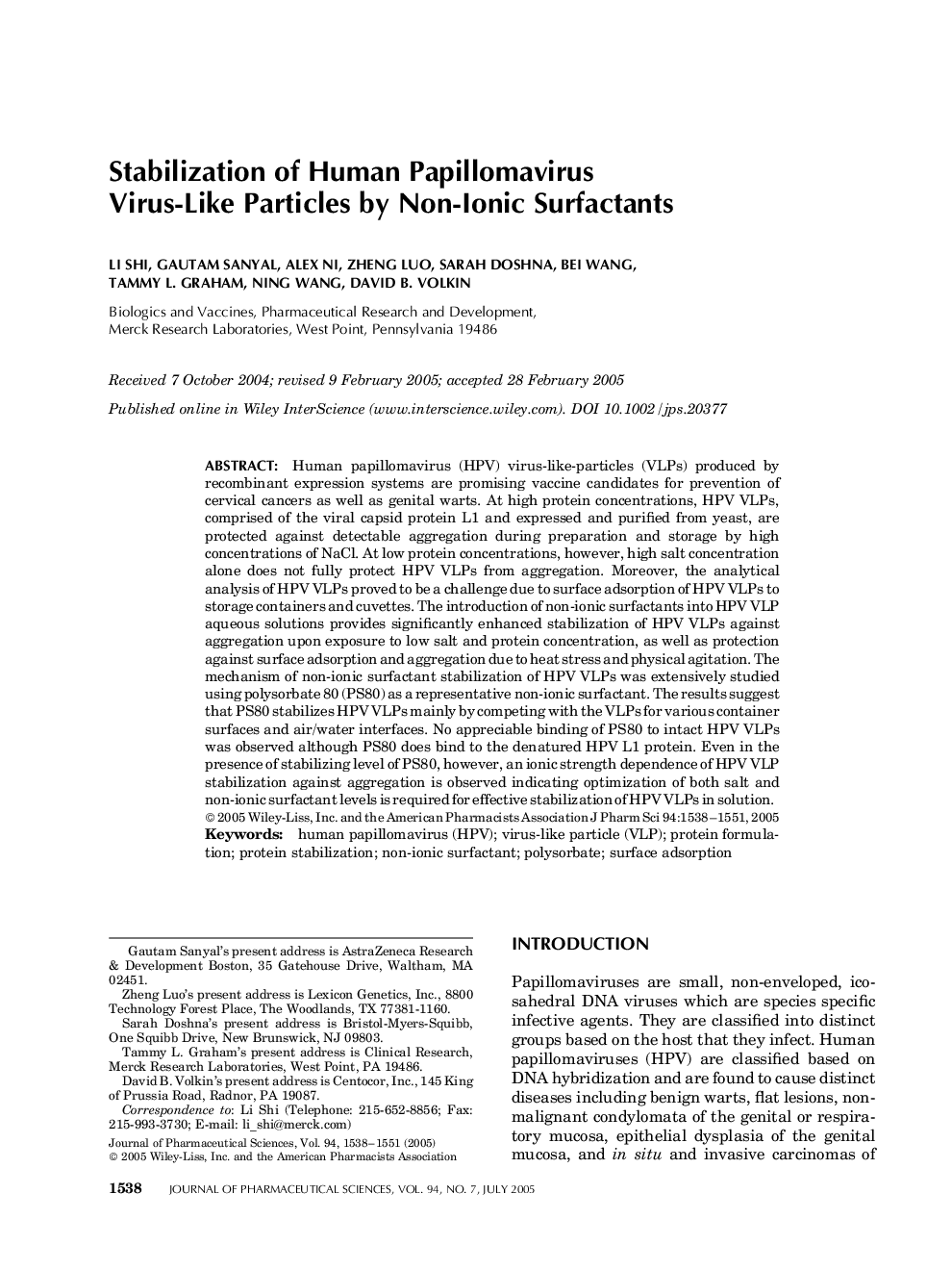| Article ID | Journal | Published Year | Pages | File Type |
|---|---|---|---|---|
| 8994842 | Journal of Pharmaceutical Sciences | 2005 | 14 Pages |
Abstract
Human papillomavirus (HPV) virus-like-particles (VLPs) produced by recombinant expression systems are promising vaccine candidates for prevention of cervical cancers as well as genital warts. At high protein concentrations, HPV VLPs, comprised of the viral capsid protein L1 and expressed and purified from yeast, are protected against detectable aggregation during preparation and storage by high concentrations of NaCl. At low protein concentrations, however, high salt concentration alone does not fully protect HPV VLPs from aggregation. Moreover, the analytical analysis of HPV VLPs proved to be a challenge due to surface adsorption of HPV VLPs to storage containers and cuvettes. The introduction of non-ionic surfactants into HPV VLP aqueous solutions provides significantly enhanced stabilization of HPV VLPs against aggregation upon exposure to low salt and protein concentration, as well as protection against surface adsorption and aggregation due to heat stress and physical agitation. The mechanism of non-ionic surfactant stabilization of HPV VLPs was extensively studied using polysorbate 80 (PS80) as a representative non-ionic surfactant. The results suggest that PS80 stabilizes HPV VLPs mainly by competing with the VLPs for various container surfaces and air/water interfaces. No appreciable binding of PS80 to intact HPV VLPs was observed although PS80 does bind to the denatured HPV L1 protein. Even in the presence of stabilizing level of PS80, however, an ionic strength dependence of HPV VLP stabilization against aggregation is observed indicating optimization of both salt and non-ionic surfactant levels is required for effective stabilization of HPV VLPs in solution. © 2005 Wiley-Liss, Inc. and the American Pharmacists Association.
Keywords
Related Topics
Health Sciences
Pharmacology, Toxicology and Pharmaceutical Science
Drug Discovery
Authors
Li Shi, Gautam Sanyal, Alex Ni, Zheng Luo, Sarah Doshna, Bei Wang, Tammy L. Graham, Ning Wang, David B. Volkin,
